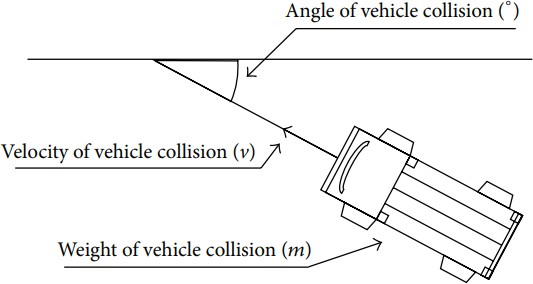Automobile response to road safety barriers upon collision
Author affiliations
DOI:
https://doi.org/10.15625/0866-7136/21025Keywords:
crashworthiness, collision, automobile, road safety barriers, numerical simulationAbstract
During a collision between an automobile and a road safety barrier, the vehicle will go through many behavior transition phases. This research will focus on determining the behavior of two car models including a sedan car and a pickup truck in collision with two safety road barriers using numerical simulation. This paper will also present images, total force graphs, and velocity graphs throughout the process to evaluate the vehicle's behavior at different impact speeds and angles. It is recognized that at similar impact speeds, collision angles, and barrier types, the pickup truck suffers more damage than the sedan. In addition, the pickup truck colliding with a concrete barrier exhibits the highest force, while the sedan colliding with a W-Beam barrier records the lowest force among the four collision types. Regarding the road safety barrier, the concrete barrier has a shorter force increase/decrease duration than the W-Beam barrier.
Downloads
References
[2] https://www.ancap.com.au/.
[3] https://www.euroncap.com/en.
[4] https://www.ccsa.gmu.edu/models/2007-chevrolet-silverado/.
[5] https://www.ccsa.gmu.edu/models/2010-toyota-yaris/.
[6] https://web.archive.org/web/20160408180243.
[7] http://www.ncac.gwu.edu/vml/models.html.
[8] J. F. Sullivan. Technical physics. Wiley, (1988).
[9] W. Zhao and B. Zhu. Basic parameters test and 3D modeling of bond between high-strength concrete and ribbed steel bar after elevated temperatures. Structural Concrete, 18, (2017), pp. 653–667. https://doi.org/10.1002/suco.201600005.
[10] J. Y. Wong. Theory of ground vehicles. John Wiley & Sons, (2022).
[11] D. Marzougui, C.-D. S. Kan, and K. S. Opiela. Comparison of crash test and simulation results for impact of Silverado pickup into New Jersey barrier under manual for assessing safety hardware. Transportation Research Record: Journal of the Transportation Research Board, 2309, (2012), pp. 114–126. https://doi.org/10.3141/2309-12.

Downloads
Published
How to Cite
License

This work is licensed under a Creative Commons Attribution-ShareAlike 4.0 International License.









